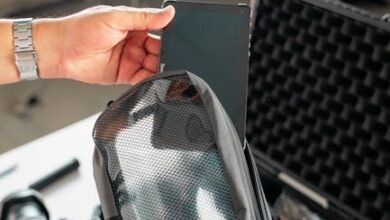The Elusive Goal: Why Consistent 3D Labels Matter

Imagine you’re trying to teach a smart AI about the world around us. It sees a coffee mug on your desk, then you pick it up, turn it, and place it on a shelf. To a human, it’s clearly the same mug. But for an AI processing a sequence of 3D images, this seemingly simple task of recognizing the “same object” consistently across different viewpoints, lighting, and occlusions is surprisingly tricky. Welcome to the world of 3D mask labeling, where consistency is king, and achieving it has been a persistent puzzle.
For years, researchers have been making incredible strides in 2D image segmentation – the ability to outline specific objects in a flat image. Tools like Mask2Former and SAM are fantastic at this. But when you move into the three-dimensional world, things get complicated. A single object seen from different angles might generate wildly inconsistent masks from these 2D models. It’s like asking someone to describe a car from the front, then the back, then the side, and getting three entirely different descriptions. This inconsistency plagues applications from robotics and augmented reality (AR) to digital twin creation, where a continuous understanding of objects is paramount.
The Elusive Goal: Why Consistent 3D Labels Matter
Why is this such a big deal? Think about a robot navigating a dynamic environment. It needs to know that the “chair” it saw from one angle is the *same* “chair” it’s now approaching from another. If its object labels keep flickering or changing, its understanding of the scene breaks down, making it prone to errors, collisions, or inefficient path planning.
Or consider an AR application where you want to digitally “place” furniture in your living room. The system needs to accurately understand the existing objects – your real sofa, your real coffee table – and track them consistently as you move your phone around. If the underlying 3D object masks are unstable, your virtual furniture might float awkwardly or disappear behind phantom boundaries.
The core problem stems from two main issues with standard 2D segmentation. First, these models struggle with viewpoint and appearance variations. What looks like one continuous object from the front might be segmented into multiple pieces from the side, or vice-versa. Second, they often suffer from “over-segmentation,” breaking down a single object into several smaller masks. This means there isn’t a reliable one-to-one correspondence between masks across different views, turning object identification into a frustrating guessing game.
From Pixels to Persistent Objects: How InstanceLift Does It
Fortunately, cutting-edge research is paving the way for a more robust solution. Researchers at MIT have introduced a fascinating framework that tackles this challenge head-on, delivering consistent 3D mask labels from a sequence of posed RGB images. Their method, which we can informally refer to by its core components like InstanceMap and InstanceLift, is a multi-step process that intelligently associates, refines, and localizes masks in 3D.
Connecting the Dots: Mask Association
The first hurdle is linking those initial, inconsistent 2D masks together. The team starts by extracting 2D instance masks from each individual image using powerful, off-the-shelf segmentation models like Mask2Former or SAM. Then comes the clever part: generating “pseudolabel masks” with a technique called InstanceMap. Think of these as preliminary guesses at which 2D masks correspond to the same 3D object across different views.
This process extends frameworks popular in 3D reconstruction, like hLoc, which uses models like NetVLAD and LoFTR to find dense pixel correspondences between images. However, a key insight here is acknowledging a limitation: these traditional correspondence models lack inherent 3D information. They perform best when there’s enough visual context in each image – for instance, if frames containing near-identical objects also share at least one other recognizable landmark. This detail highlights the nuanced interplay between 2D feature matching and the ultimate goal of 3D understanding.
Despite these powerful association techniques, the system still grapples with the inherent inconsistencies of 2D segmentation models. Viewpoint changes and appearance variations often mean segmentations of the same object aren’t perfectly aligned across images. And the problem of over-segmentation still means a single 3D object might be split into multiple 2D masks, challenging the one-to-one correspondence ideal.
Smoothing Out the Wrinkles: Mask Refinement
After the initial mask association, the resulting “pseudolabel” masks are inherently noisy. This is entirely expected due to varying segmentation hierarchies and differing viewpoints. To address this, the researchers feed these pseudolabels into a “label NeRF” (Neural Radiance Field). NeRFs are remarkable for their ability to learn 3D scenes from 2D images, and in this context, the label NeRF learns to represent instance labels in 3D space, resolving many of the initial ambiguities.
However, even NeRFs have their limits, especially with extreme cases of label ambiguity. To tackle these stubborn situations, a fast post-processing method is employed. This method intelligently determines and merges “colliding labels” based on random renders from the label NeRF. It’s a pragmatic approach, recognizing that perfect automation isn’t always feasible, and the occasional remaining ambiguity can be quickly corrected via sparse human annotation – a smart balance of AI and human intervention. For this refinement stage, they cleverly realize that only coarse information about mask noise is needed, so they render images downsampled by a factor of two, significantly speeding up the process.
Speed and Smart Predictions: Localizing Instances in 3D
Once the label field is trained, a major benefit emerges: the ability to predict 3D-consistent instance labels for *novel* viewpoints without having to rerun the entire, resource-intensive 3DIML process. But here’s another challenge: rendering every single pixel from a novel viewpoint using a NeRF, while powerful, can be slow and sometimes noisy.
To overcome this, the team proposes a fast localization approach. Instead of rendering every pixel, they first precompute instance masks for a new input image using a rapid instance segmentation model like FastSAM. Then, for each detected instance region in that new image, they sample the corresponding pixel-wise 3D object labels from the trained label NeRF and simply take the majority label. This elegant solution provides fast, clean, and consistent 3D labels for new views.
An added bonus of this approach is its flexibility. The initial input instance masks can be constructed using various prompts or even manually edited before localization. This means users could guide the system to focus on specific objects or correct initial segmentation errors, making the whole workflow more adaptable and user-friendly.
The Real-World Impact: What This Means for 3D Vision
This work from MIT is more than just an academic exercise; it represents a significant leap forward for computer vision. By making consistent 3D mask labeling simple and efficient, it unlocks new possibilities across various domains. Imagine more robust augmented reality experiences where digital content truly understands and interacts with the real world’s objects. Consider industrial robotics, where machines can reliably track components on an assembly line, even if their viewpoint changes. Or perhaps more advanced self-driving cars that have a deeper, object-centric understanding of their surroundings, leading to safer navigation.
The ability to reliably assign persistent identities to 3D objects across dynamic scenes moves us closer to a future where AI can perceive and interact with our physical world with greater intelligence and nuance. It’s about teaching machines to see not just pixels, but tangible, consistent objects, just as we do.
Conclusion
Achieving consistent 3D mask labeling has long been a bottleneck in 3D computer vision. The innovative framework developed by the researchers at MIT offers a powerful and practical solution, combining intelligent mask association, 3D refinement using NeRFs, and efficient localization for novel viewpoints. By transforming inconsistent 2D segmentations into stable, 3D-aware object identities, this work lays crucial groundwork for the next generation of AI applications that demand a truly robust understanding of our three-dimensional world. It’s a testament to how creative problem-solving can demystify complex challenges, making sophisticated 3D perception more accessible and reliable than ever before.





